Excerpts from Jim Conrad's
Naturalist Newsletter
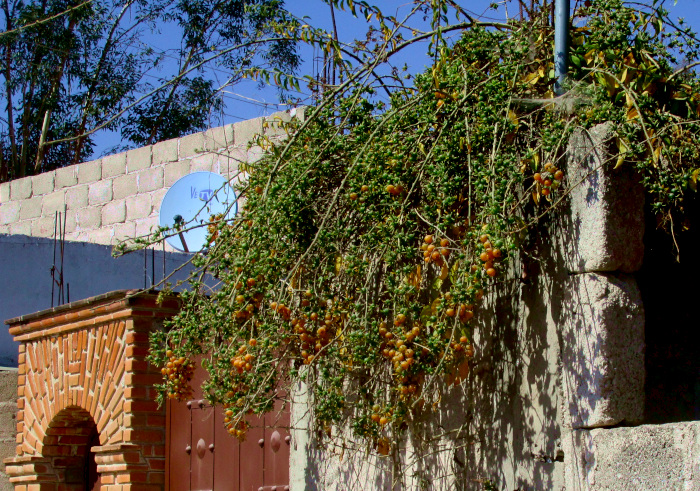
entry from January 29, 2022, issued from near Tequisquiapan, elevation about 1,900m (6200 ft), ~N20.57°, ~ W99.89°, Querétaro state, MÉXICO
BLADE-APPLE CACTUS
The moment I saw the above woody bush cascading over a streetside wall, I knew it was something new for me. A closer look confounded me completely:
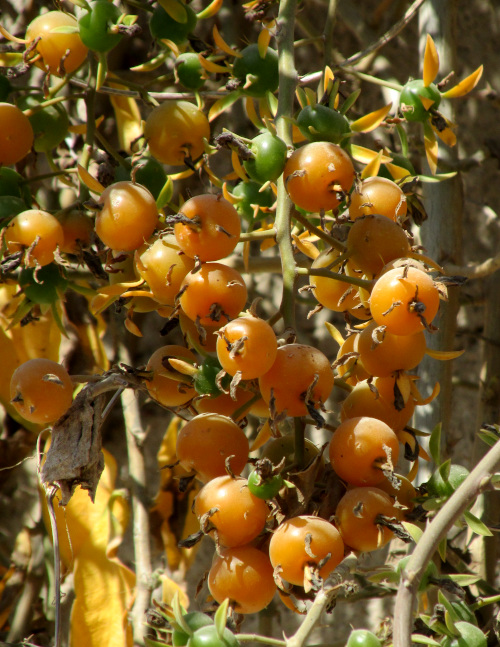
The "small plums" bore slender, dried-up items issuing from their skins. A closer look confirmed that the dried-up things simply attached to the fleshy fruit's skin, and that's simply not supposed to happen.
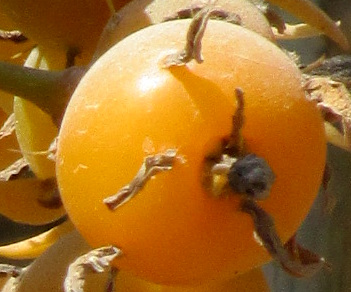
I thought that maybe a cut-open fruit might explain things, but it didn't.

It looked like a juicy plum, except it contained three fertile-looking seeds and a couple of underdeveloped, apparently aborted ones. Also the seeds didn't cling at all to the fruit flesh. The flesh was sweet-acidy, not unlike a regular plum's and, like a plum, the thin skin wasn't a bother.
Trying to figure out how leafy appendages could end up adorning a plum-like fruit's skin, I tried to interpret the desiccated, brown thing atop each fruit. Was it a withered corolla, more leaf-like things, or what? There were plenty of green, immature fruits on which the brown thing at the top were less shriveled, so the item was examined on one of them:

Still I couldn't say what it was, but part of it looked like more of the things issuing from the fruit's skin. Making a longitudinal section of the green fruit didn't explain much, either, but it did show that it was well rooted inside the fruit's top:
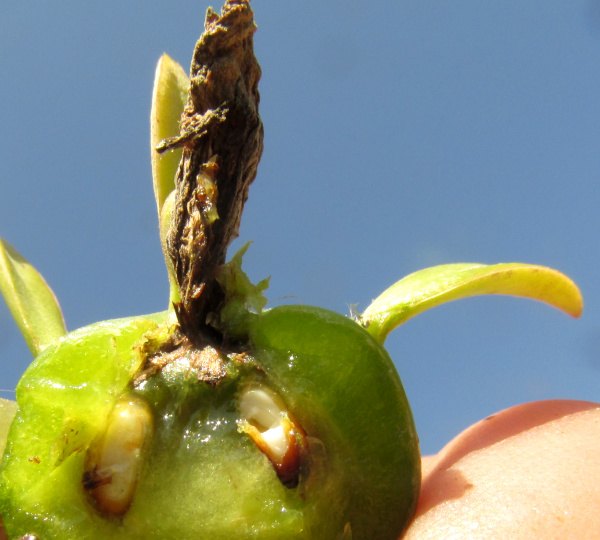
Seeds seem to cluster in the upper part of the fruit, though later I was to learn that they are attached by their placenta-like funiculi to the ovary's bottom, so they demonstrate "basal placentation," which is a relatively uncommon way for ovules to attach themselves. In the picture you can't see the placentation, but the seeds narrow at their bases, indicating where the funiculus attaches to them. Now I cut across the green fruit:
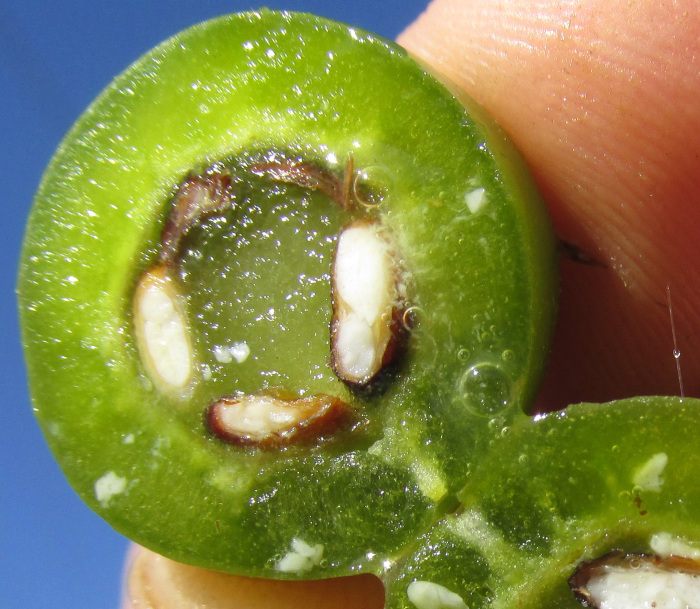
Not much new information there, except that the green flesh is exceptionally sticky.
Finally, a look at the leaves, which on most of the dangling stems had dried up and fallen off, but a few remained, shown below:
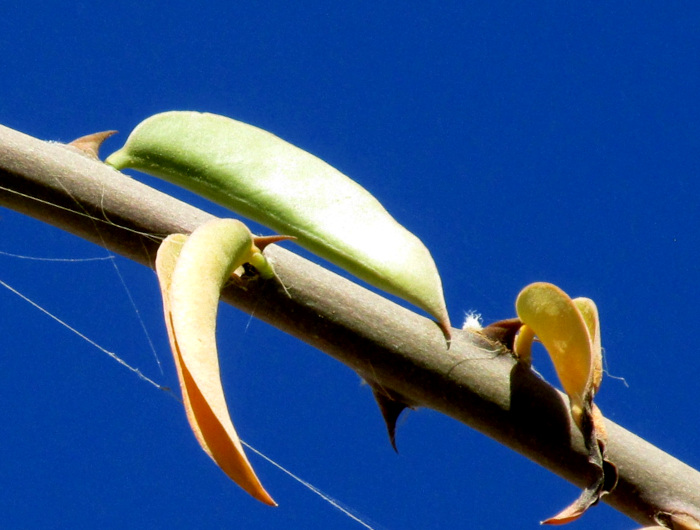
Beside the broad-based spine at the base of the yellow leaf at the above picture's lower, right corner, notice the white tuft of fuzzy hairs at the base of the spine. All the spines are accompanied by such tufts, and that feature alone should have cued me to which plant family I was dealing with. However, all the above fruit features so flabbergasted me that at first the information didn't ring a bell.
Eventually it all dawned on me. The closest I've ever come to seeing anything leaflike projecting from the skin of a fruit was with the delicious dragonfruits we used to harvest in the Yucatan. Dragonfruits are produced by one of several tree-climbing plants called "Night-blooming Cereus," Hylocereus undatus, profiled with pictures of dragonfruits on our Night-blooming Cereus page. And Night-blooming Cereuses are cacti. And it's true: cacti bear spines, and at the base of cactus spines often there's a tuft of tiny, stiff, hairlike spines called glochids. And during the course of evolution, the first, most "primitive" cactus species possessed leaves, and the genus best demonstrating this early, primitive cactus form was Pereskia, which I've always wanted to see.
A quick check on the Internet informed that about four species of Pereskia have survived into modern times, and that one of them sometimes shows up in Mexico in gardens, though it's native from Panama and along and a bit inland from the Caribbean and Atlantic coast of South America from Colombia to Argentina.
Our species, often known as Blade-apple Cactus, Leaf Cactus, Rose Cactus, Barbados Gooseberry and by other names is PERESKIA ACULEATA. It's introduced in many tropical and semitropical countries, including Florida, and in some places has even become a serious invasive displacing native species.
Despite its aggressive behavior outside its native habitat, its fruit is considered tasty and exceptionally nutritious.
As it produces attractive flowers, and I look forward to their blooming.
entry from August 29, 2022, issued from near Tequisquiapan, elevation about 1,900m (6200 ft), ~N20.57°, ~ W99.89°, Querétaro state, MÉXICO
BLADE-APPLE CACTUS FLOWERING
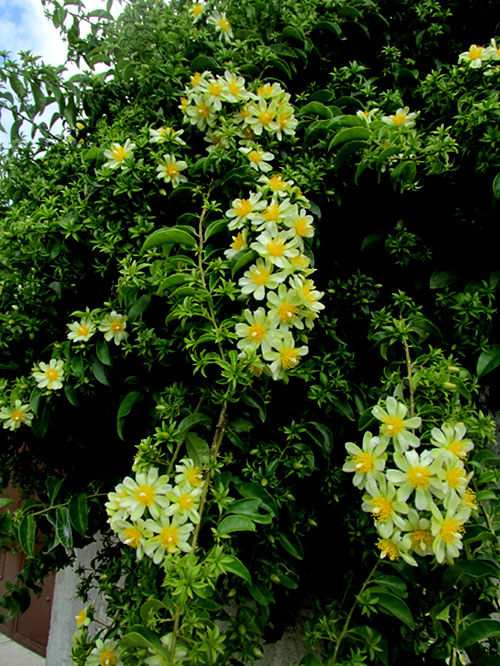
The above flowering took place about two weeks after the two-month delayed rainy season began.
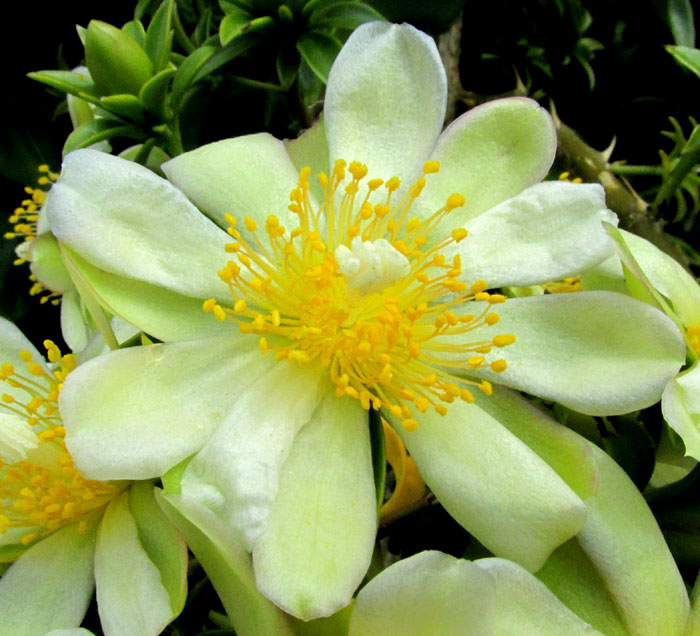
From the front, the flower is fairly typical of the Cactus Family.
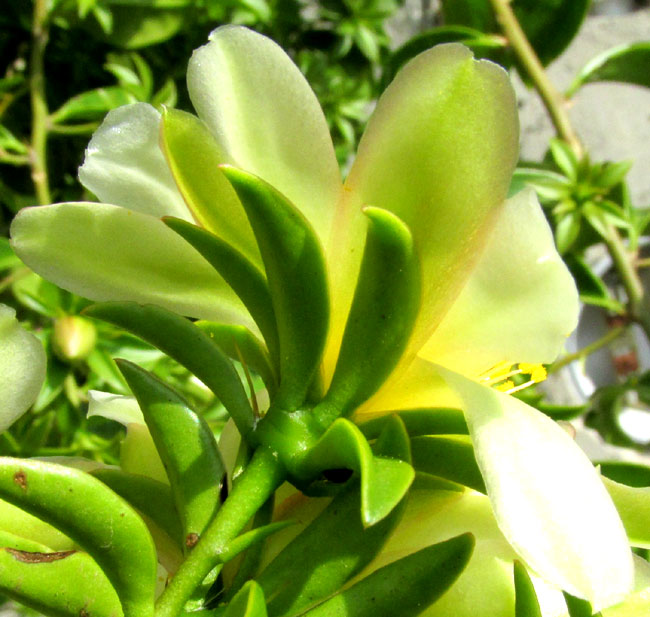
A rear view of the blossom shows a feature reminding us of the primitive nature of Pereskia species: Cactus flowers have inferior ovaries -- floral parts arising atop the ovary -- but these blossoms look a bit in-between the inferior and superior ovary position.